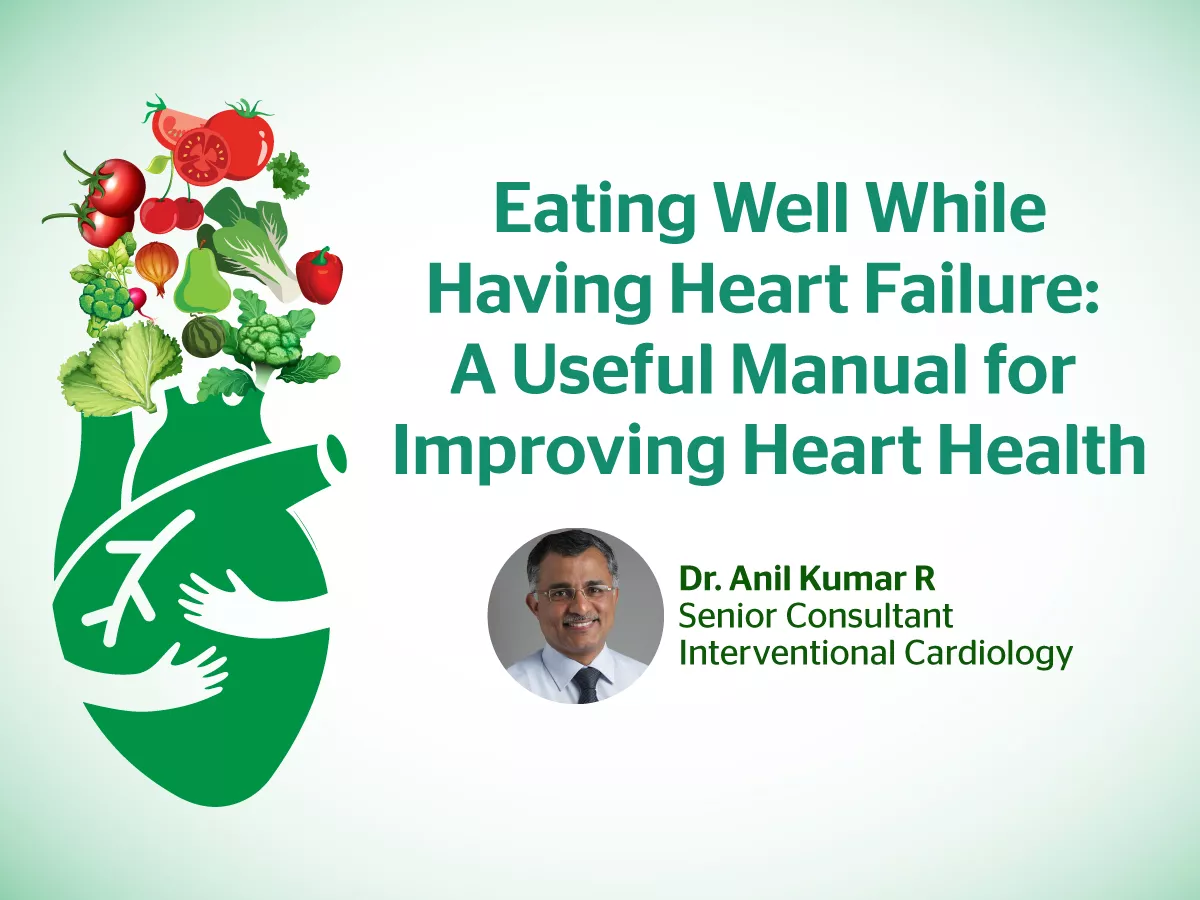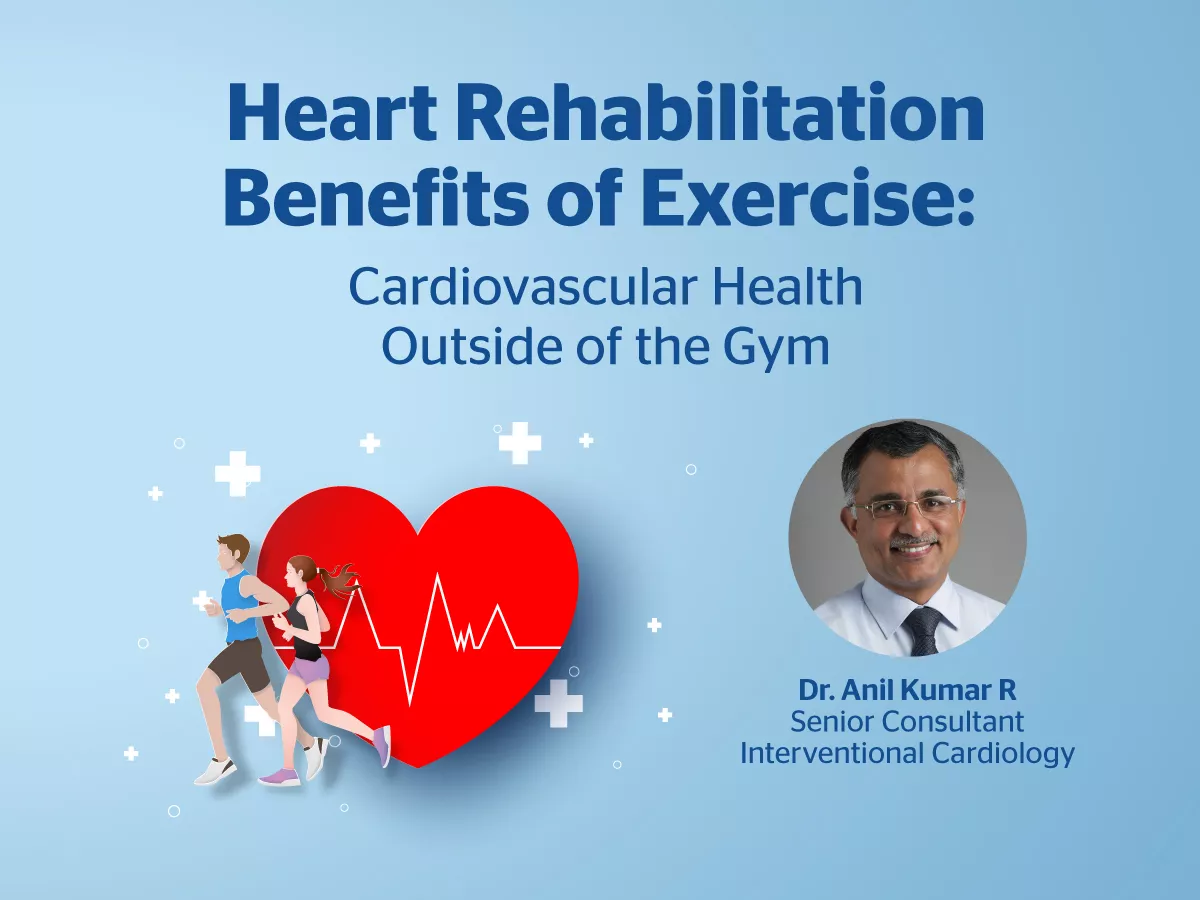Your diet is one of the most crucial changes you must make when you have heart failure. The chronic illness known as heart failure, in which the heart is unable to pump blood as effectively as it should, can lead to weariness and fluid accumulation. While medications are essential, the food you eat can make a big difference in how you feel every day. Consulting a cardiologist in Kochi Kerala can also help you tailor a diet that suits your specific condition.
In this guide, we’ll break down simple, heart-friendly eating habits, what to steer clear of, and some easy meal ideas to help you manage heart failure more comfortably. Visiting a reputable heart hospital in Kochi Kerala can provide you with professional guidance and monitoring.
Why Your Diet Is Important?
Giving your heart the best support possible is more important than counting calories when it comes to controlling heart failure. Consuming unhealthy diets can cause weight gain, fluid retention, and elevated blood pressure, all of which put stress on the heart. Conversely, eating the correct meals can help lower inflammation, raise blood pressure, and ease the strain on your heart. For personalized advice, a cardiology hospital in Kochi Kerala can provide comprehensive dietary and lifestyle recommendations.
Core Nutrition Tips for a Healthier Heart
Here are five key things to keep in mind when planning your meals:
1. Cut Back on Salt
Too much sodium is a major issue for people with heart failure—it can lead to swelling and breathing difficulties by causing your body to retain fluid. Experts suggest keeping your sodium intake between 2,000 and 3,000 mg per day.
- Avoid these high-salt culprits:
- Canned soups and frozen meals
- Fast food and takeout
- Packaged spice blends
- Processed meats like bacon or salami
Smart swaps:
- Choose fresh or frozen vegetables instead of canned ones
- Cook at home using herbs and spices instead of salt
- Always read food labels—sodium hides in sauces and dressings too
2. Choose Healthy Fats
Not all fats are bad. In fact, your heart needs some fats—just the right kind. Healthy fats can help reduce bad cholesterol and protect your arteries.
Add more of these to your plate:
- Fatty fish (salmon, mackerel)
- Avocados
- Nuts and seeds
- Olive oil
Limit these:
- Trans fats (found in many snacks and baked goods)
- Saturated fats (from butter, fatty meats, and full-fat dairy)
3. Eat More Fiber
Fiber is your heart’s best friend. It helps with digestion, keeps your blood sugar stable, and lowers cholesterol—all crucial for heart failure management.
Good sources of fiber:
- Whole grains (oats, brown rice, quinoa)
- Vegetables like broccoli, carrots, and greens
- Fruits like berries, apples, and pears
- Beans and lentils
4. Watch the Sugar and White Carbs
Sugar overload can sneak up on you—and it’s rough on the heart. It can lead to weight gain, high blood pressure, and cholesterol issues. Refined carbs (like white bread and pasta) act similarly, spiking your blood sugar and inflammation levels.
Try to skip:
- Sodas and energy drinks
- Cakes, candy, and pastries
- White bread and pasta
Try this instead:
- Go for whole grains instead of refined ones
- Choose fruit over processed sweets
- Drink water or unsweetened tea rather than sugary drinks
5. Keep Your Weight in Check
Carrying extra weight makes your heart work harder. A diet focused on real, nutrient-rich foods can help you lose or maintain weight in a healthy way.
How to keep it balanced:
- Pay attention to portion sizes
- Eat slowly and mindfully
- Stay active with gentle exercise like walking or swimming (with your doctor’s OK)
- Meal Inspiration for a Stronger Heart
Need ideas? Here are a few heart-healthy meals you can try:
Breakfast
- Oatmeal with fresh berries and chia seeds — great for fiber and antioxidants
- Greek yogurt with walnuts and sliced banana — protein-packed and satisfying
Lunch
- Grilled chicken salad with avocado and olive oil dressing — low in salt, big on nutrients
- Quinoa bowl with chickpeas and roasted vegetables — filling and fiber-rich
Dinner
- Baked salmon with steamed broccoli and sweet potato — loaded with omega-3s
- Lentil soup and a slice of whole wheat bread — simple, warm, and nourishing
Snacks
- Carrot sticks with hummus — crunchy and satisfying
- Apple slices with almond butter — sweet, creamy, and energizing
Don’t Forget to Hydrate
- Water is essential—but if you have heart failure, fluid intake might need to be limited. Too much can lead to fluid buildup. Talk to your doctor about how much you should drink each day.
Conclusion
Managing heart failure starts on your plate. Eating the right foods—low in sodium, rich in fiber and healthy fats—can really improve how you feel and help you avoid complications. You don’t have to overhaul everything overnight. Small, steady changes make a big impact.
If you’re unsure where to begin, consider talking to a registered dietitian. They can help tailor a plan that fits your lifestyle and supports your heart.
With thoughtful choices and the right support, living well with heart failure is more than possible—it’s within your reach.











